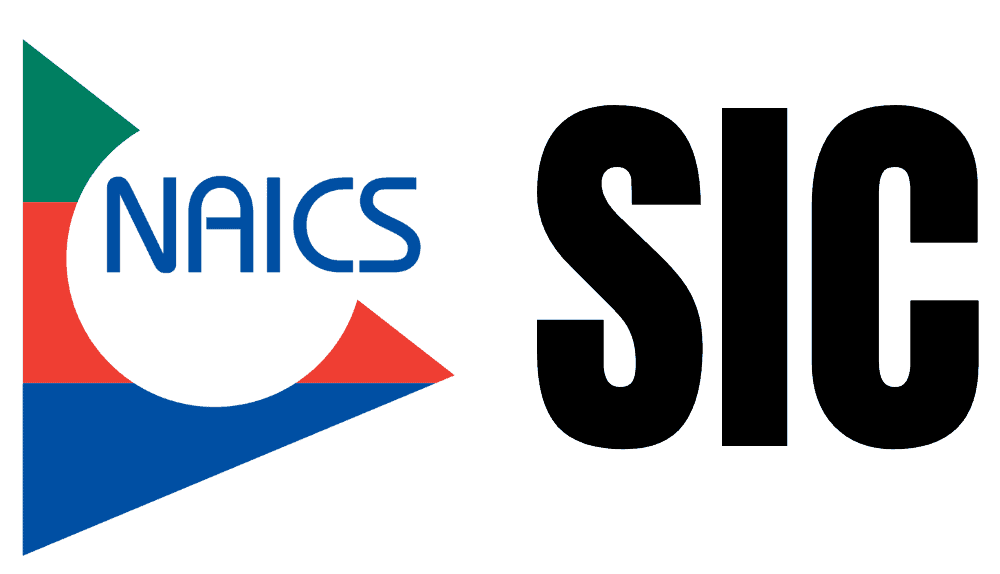To better understand and compare businesses, it is helpful to classify them according to their industry, primary focus, and other relevant factors. The NAICS and SIC Codes systems are two of the most popular ones, but they are not identical in precision or utility. In contrast to the more universally accepted NAICS code, the less formalized SIC code is used by the government.
However, the government, international organizations, and the public sector use the more sophisticated NAICS code, which stands for the North American Industry Classification System. This article will look at the two industry codes in more detail and explore their differences.
What are NAICS Codes and How Do They Work?
NAICS codes are a classification system used to identify the primary source of income for businesses in the NAFTA countries of Canada, Mexico, and the United States.
Each code has six digits and is used to specify the primary work that a given company performs. The hierarchically organized NAICS system was created to cover many business activities comprehensively. The lower digits of the code provide more specificity regarding the business’s main activity, while the first two digits of the code represent one of the 20 sectors.

In order to assist in the compilation of production statistics, Statistics Canada, the United States Economic Classification Policy Committee, and Mexico’s Instituto Nacional de Estadistica y Geografia (INEGI) jointly developed the NAICS codes. The codes cover comparable sectors, subsectors, and industry groups in all three countries, despite possible differences.
For various business activities, financial information can be gathered using NAICS codes and statistics on the industry and trade. Accessing the overall statistical data is simpler because although each country’s government agency independently compiles the statistics, they all use the same codes to identify comparable industries.
Although NAICS codes can be used to categorize businesses, it’s important to remember that they weren’t created with larger, more complex enterprises in mind. As a result, a single NAICS code may not accurately describe large establishments with more than one primary source of income.
What is a SIC Code and How Does it Work?
SIC codes, or Standard Industrial Classification codes, were created in the 1930s to classify American businesses for easier comparison with Canadian counterparts. This system was extensively used for many decades before it gradually started to become inconsistent as a result of numerous changes and additions. The NAICS, which replaced the SIC system, was introduced in response.
Despite the introduction of NAICS, many businesses still use SIC codes today, especially in the private sector. Companies can use these codes to analyze the economy, divide markets for marketing purposes, and determine who their rivals are. In some cases, government organizations also use SIC codes to assess contract eligibility.
A company’s industry is denoted by a letter in a SIC code, followed by four numbers. The major industry is represented by “20” for the Manufacturing division’s Food and Kindred Products division. The subgroup is represented by “204” for grain mill products. The last digit is “2043” for Cereal Breakfast Foods.
However, there can be some variation between classifiers, as businesses frequently add numbers toward the end of SIC codes to update or expand the original classifications. Nevertheless, a list of SIC codes is available for reference from the U.S. Department of Labor.
NAICS vs. SIC
Compared to SIC codes, the NAICS system provides a more detailed look at a company’s operations. With 1,170 recognized industries, NAICS provides more classification options than SIC’s 1,004 recognized industries. In addition, the NAICS system recognizes 358 new sectors, which include 250 service-related industries.
Unlike the SIC codes, the NAICS codes were created with a consistent economic concept. NAICS codes group businesses with similar processes and products, whereas SIC codes group industries, based on demand or production.
The NAICS system is a joint effort between the United States federal government and statistical agencies in Canada and Mexico. In contrast, SIC codes were developed solely in the United States. This cross-border cooperation enables direct comparisons of industrial production statistical data in all three North American Free Trade Agreement countries.
Uses of the NAICS and SICS Codes
The NAICS and SIC codes can identify a company’s business lines. This information aids in understanding the activities and areas of expertise of a business. You can use the principles to find rival companies in the market. This enables you to discover who else is active in the industry and what services they provide.
The ability to produce industry ratios is yet another significant application of these codes. A company’s performance can be compared to the version of the industry at large using this information. In addition to helping to understand the company’s financial health, this can be useful in identifying the company’s strengths and weaknesses.
Companies within an industry can also be listed using the SIC and NAICS codes. Finding out who else is working in the same sector and potential suppliers or customers can both benefit from this. You can also use these codes to locate articles and recent news about a particular industry. This can offer insightful information about market trends, difficulties, and opportunities.
How to Find the Industry Codes
NAICS code
For any business owner, locating their NAICS code is critical because it helps classify their company’s operations and enables the government to gather and examine economic data precisely. Choosing the correct code is essential because it should specifically describe your company’s operations. If your company has several different product lines, you might need to use several other codes to describe the range of your operations accurately.
There are two methods available for those seeking their NAICS code. The first is to use the NAICS search page, where you can use the code lookup tool to look up your company. Use the user-friendly tool’s keyword, industry, or code search functions to find the best match for your business. However, you can go to the Census Bureau’s website for more help if you can’t find your code using the tool. The Census Bureau is the official repository for NAICS codes; you can get in touch with them for more details and instructions on how to get your code.
SIC code
There are several ways to discover your SIC code. The first option is to use the SIC code lookup tool on the Securities and Exchange Commission website. You can use this tool to look up your SIC code by using keywords, industries, or a company name. It will present you with a list of potential matches after you enter the necessary information.
The use of trade publications or industry associations is another choice. Numerous of these organizations have lists of SIC codes and the related industries, so they might be able to help you find the best code for your company.
Additionally, you can contact the SEC for help if you’re still having trouble locating your SIC code. They have a group of professionals on staff who can assist you in navigating the procedure and finding the best code for your company.
Conclusion
For many entrepreneurs, starting a business is a thrilling journey that involves providing goods or services to the market and receiving payments in return. On the other hand, business owners need to learn a whole new set of acronyms like NAICS and SIC, in addition to the more common ones like LLC and MCC.
A company’s industry, sector, and other defining characteristics can be classified and explained with the help of these codes. Despite the widespread adoption and standardization of NAICS (North American Industry Classification System) codes, some businesses continue to use the older and less comprehensive SIC system. The primary distinction between the two systems is in the breadth of industries covered; NAICS codes include more sectors than SIC codes, which may not account for some emerging sectors.

